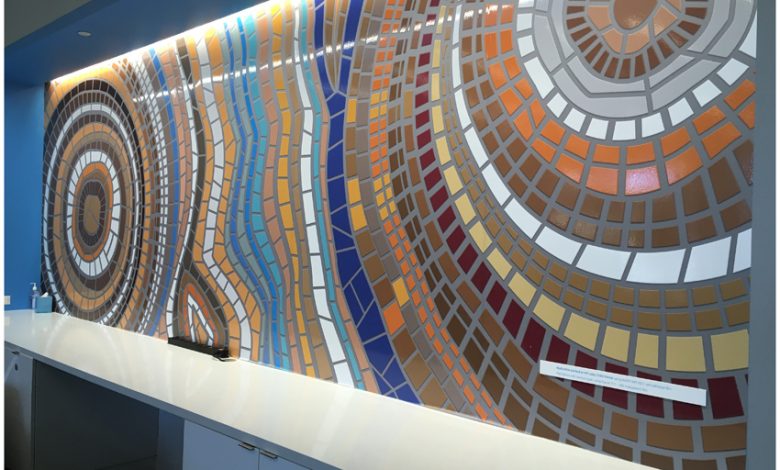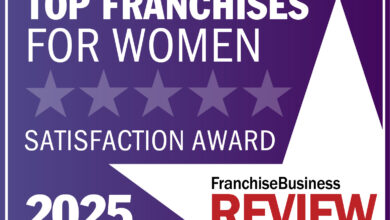Show, don’t tell. Writers often swear by that dictum. Readers need to feel like they’re experiencing a story, rather than being told a story, the thinking goes.
Give family and friends experiences, not presents. You hear that a lot during the holidays. The idea is that we all have so many objects that ultimately get discarded or relegated to a corner of your home. Better to spend money on a vacation you’ll remember forever.
Don’t sell customers things; give them a shopping experience. Business consultants and influencers frequently invoke that, arguing that consumers can purchase things from anyone. But if they have an emotional connection with your brand, and they enjoy the experience of shopping at your business, they’ll keep coming back.
All of this explains why, more and more, signs and graphics are being tasked to create an experience. Signs, which have always been about telling the public information, are also becoming part of the show.
It’s a trend that has been dubbed experiential graphic design, or EGD. And while it’s the next big thing, it’s hard to imagine it being a passing fad. When done right, EGD has been beyond successful, improving both the consumer experience and the bottom line for businesses nationwide.
You know what they say. Once is a fluke, twice is a coincidence, and three times is a trend. In my line of work, as CEO for SpeedPro Imaging, we’ve recently come across countless businesses that have embraced EGD, to the delight of their customers and their accountants. And if you’re wondering where this is all heading, here are three specific experiential graphic design success stories that show we’re on to a trend that’s here to stay at SpeedPro Imaging!
Hewlett Packard’s worldwide headquarters
Last year, the welcome center at Hewlett Packard’s worldwide headquarters in Palo Alto, California, went through a massive rebranding. Transforming the welcome center from a conventional design to something that would elicit gasps from the public, involved six different large-format graphic projects, including 38-foot wall murals, oversized window graphics, and multi-dimensional wall treatments.
Over the course of nine months, SpeedPro transformed HP’s long corridors and glassed-in meeting rooms into award-winning “habitats,” such as a home habitat, office habitat and an office-of-the-future habitat. The pictures best tell the story here, but the idea was to immerse employees and visitors in inspiring and thought-provoking surroundings.
And if three business adopting experiential graphic designs is a trend, what would six businesses constitute? Steve Moran-Cassese, the local owner of the SpeedPro Imaging Marin location that rebranded HP, has also blanketed walls with large graphics in Silicon Valley for Google, Facebook and Cliff Bar. His large wall murals and wall coverings have been printed on materials that can mimic any finish such as silk, suede, metal or wood.
Arcade bar in Chicago
Mark Kwiatkowski, the owner of Replay Lincoln Park, an arcade bar in Chicago, decided last Halloween to dress up his bar as Moe’s Tavern from the long-running popular cartoon television series, The Simpsons.
And while, at first, Kwiatkowski looked for a set designer to help him, he instead teamed up with Shira Kollins, president of SpeedPro Imaging Chicago.
Kwiatkowski meticulously combed through old Simpsons episodes to get ideas and inspiration for how Moe’s Tavern should look, while Kollins utilized her own creativity and SpeedPro’s latest technology, ultimately turning out large three-dimensional wall murals, floor graphics, foam core-outs and black-out and textured vinyl applications.
By the time she was done, Replay Lincoln Park looked about as close as a real bar will ever get to a cartoon bar. Signs for Duff Beer, the fictional brew served up on The Simpsons, were plastered on walls in the bar. A colorful cutout of Moe stood behind the bar. The menu boards replicated the look and menus of Moe’s Tavern in The Simpsons.
The public loved it. And the media knows a good story when it sees one.
Media coverage of the bar design resulted in more than a million dollars of marketing value for the watering hole, with coverage coming from outlets such as The Chicago Tribune, WGN Radio and Mashable.com. Customers shared their photos of the bar on social media. It was a mob scene in the best possible sense.
“I knew it would be busy. I knew it would be popular. I had no idea it would be this popular,” manager Sean Adamson told CBS News of the crowds.
Meanwhile, if you need further evidence that experiential graphic designs are here to stay, Kollins was recruited to create large-format graphics for other Chicago landmarks like Soldier Field, Fields Museum, Mario Batali’s Eataly and Hilton Hotels.
Volkswagen dealership
Jerame Jones, general manager of Leith Automotive, a Volkswagen dealership in Raleigh, North Carolina, was becoming increasingly discouraged by the look of his workplace. The dealership was as generic as they come. There was no energy, no culture, no sense of fun, and Jones could see that the lack of pizzazz was having a negative effect on sales.
Jones turned to local SpeedPro Imaging owner Mark Simmons for a visual rebranding that would energize employees and customers.
And, boy, would it. A Polynesian theme was introduced including window graphics that are 100 feet long and 20 feet wide. The larger-than-life colorful hibiscus, surf boards and island scenes grab drivers’ attention while Hawaiian T-shirts, tiki statues, and floor-to-ceiling wall graphics wrap the building in an island vibe, creating a fun “look at us, we’re different” atmosphere that fits right in with the VW brand.
The theme has caught on throughout the dealership. The sales team wear tie-dye shirts, and reggae music plays in the showroom.
We’re told that employee morale has never been higher, and that car sales are up by 30 percent since the large format graphic rebranding.
So where do we go from here? I can’t pretend to know, but printing technology has enabled large-format printers the freedom to go much farther than ever before. Large-format printers are increasingly becoming an integral part of a new and collaborative design team, continually changing how businesses connect with ever savvy consumers. It’s easy to imagine anything that once would have been unimaginable becoming possible. For instance, large-format printers are already incorporating augmented reality/virtual reality into the world of experiential graphic design … what could be next?
It’s an exciting time to be in this industry. For centuries, signs have told us where to go and what to do. Now, it’s the large-format printers, those who make signs, who are showing us the way.











